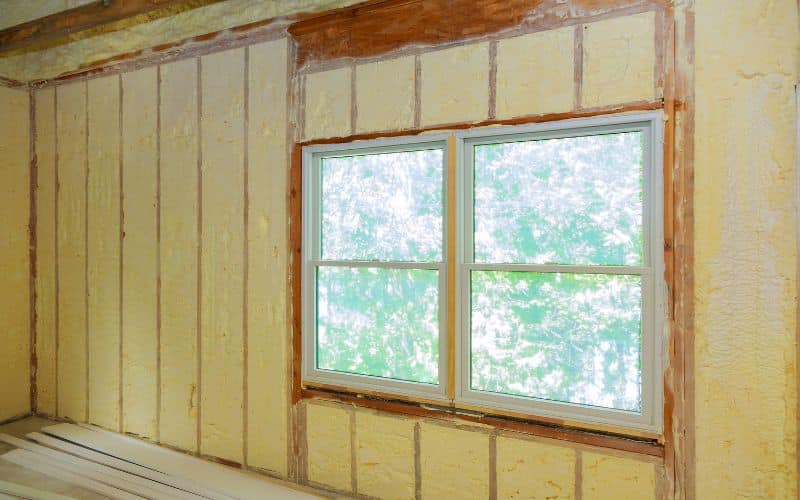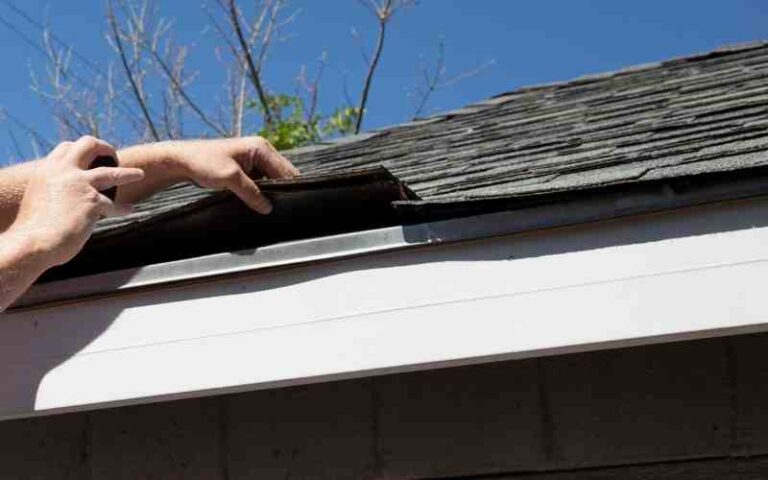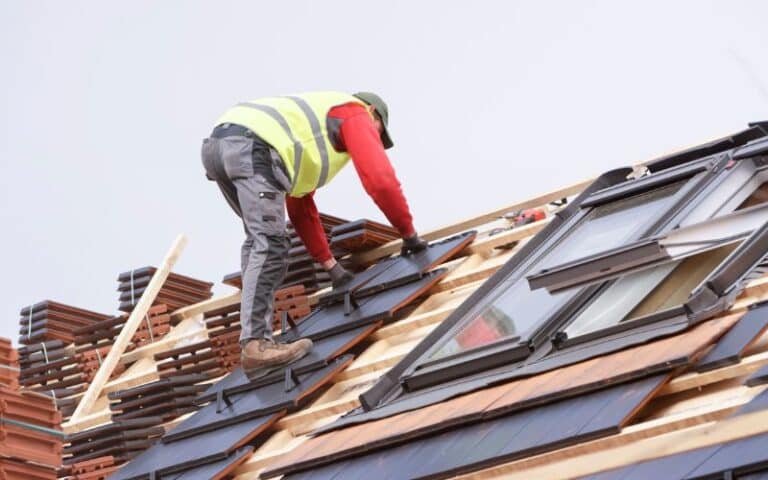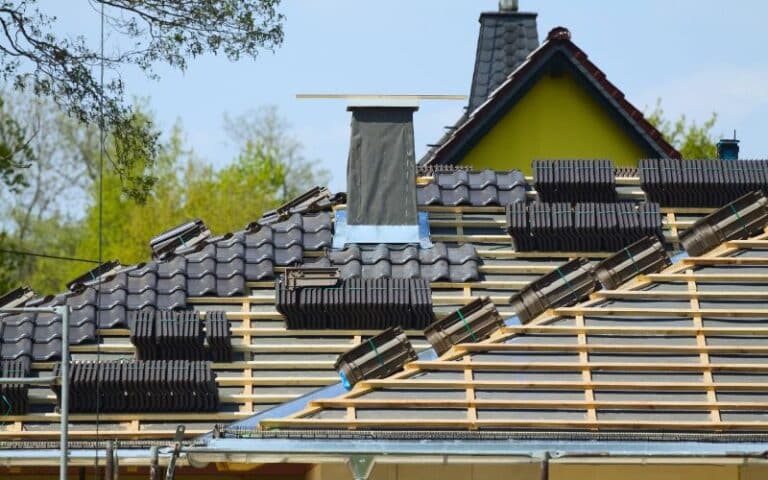Fiberglass is a material used for deck coating and is one of the best waterproofing deck coating materials.
Fiberglass has fantastic features, such as resistance against heat and electrical insulation.
It is understandable if you want to coat your deck with Fiberglass; I’d do the same.
You may be wondering about the costs of a fiberglass deck coating. If you are, here’s an answer for you.
It costs about $9-$17 to coat your deck with Fiberglass. When you install the Fiberglass, the costs are $21-$40 per square foot. You’d need about $10-$55 to repair the fiberglass deck if it ever gets damaged.
In this article, I’ll give you a breakdown of the advantages and disadvantages of fiberglass coating, how long it lasts, and ways to properly maintain fiberglass decks.
If you are thinking about getting fiberglass coating for your decks but don’t know much about it, this article is for you.
Ready for a Roofing Quiz?
How Much Does it Cost to Coat a Deck with Fiberglass?

It would cost about $9-$17 to coat a deck with Fiberglass per square foot. Fiberglass decking has to do with composite decking.
Composite decking means that it is a blend of multiple materials. Once you install the Fiberglass, the costs are between $21-$40 per square foot.
You should ensure proper maintenance procedures for your fiberglass decks because they can be quite costly to repair when damaged.
Repair costs for fiberglass decks are around $10-$55.
Is Fiberglass Coating Worth It?
Fiberglass coatings have desirable properties and advantages, making it worth every penny.
Here are the properties of Fiberglass:
- It is dimensionally stable. Fiberglass does not shrink or stretch due to varying temperature
- Fiberglass is unaffected by exposure to moisture
- It possesses high strength
- Fiberglass does not burn or support combustion
- Fiberglass is not affected by most chemicals except hydrofluoric acid, hot phosphoric acid, and strong alkaline substances.
- Fiberglass is a perfect insulating material.
- It has a low coefficient of thermal expansion.
- Fiberglass is unaffected by insects or microorganisms.
However, fiberglass coating is not without its disadvantages also.
Here is a table to show the pros and cons of using fiberglass coating:
| Pros | Cons |
|---|---|
| It is light | Heavier than aluminum and wood, making it unsuitable for certain structures |
| You don’t need to paint it | It absorbs a lot of heat it comes in a dark color |
| It is very robust | Vulnerable to mold |
| Resists decay, fire, corrosion, and UV rays | Too much exposure to UV rays can cause cracks |
#1. Advantages Of Fiberglass Coating
- Thermal, sound, and electrical insulation
- Fiberglass has a high tensile strength
- It is soft to the touch and lightweight
- Resistant against shrinking
#2. Disadvantages Of Fiberglass Coating
- Fiberglass is vulnerable to mold. Unlike other insulating materials like cellulose, Fiberglass allows for free air movement that carries mold pores.
- You’d have to worry about leaks because air easily passes through it.
Fiberglass comes in different models, so you can easily find one that matches your taste. Fiberglass is also very cost-friendly and comes with desirable long-lasting features.
How Long Will A Fiberglass Deck Last?
Fiberglass decks can last for about twenty-five to thirty years if properly maintained.
It would be best if you always carried out certain processes for your fiberglass decks to last long.
Here are certain tips for handy care of your fiberglass decks:
#1. Clean the Fiberglass Decks
Hiring a professional to power wash your decks from time to time is necessary because they know best.
However, you need to take certain steps to ensure the cleanliness of your decks. Here are steps to follow for effective results when cleaning your fiberglass decks:
#1. Choose the appropriate cleanser
Different cleansing solutions work for different types of stains. You must pick the correct cleanser to clean specific stains on your fiberglass decks.
#1. Dishwashing liquid For Cleansing Oil/Grease Stains
Bleach damages fiberglass. Dishwashing liquids are perfect for oil and grease stains. However, you shouldn’t use them on fiberglass decks if they contain bleach.
Please refrain from using automatic detergent because of its abrasiveness to Fiberglass.
#2. Baking Soda For Cleansing Caked-on Dirt
Mix the baking soda with water to form a paste to use for cleaning. You can add vinegar to the paste for deeper cleaning.
#3. Acetone or Paint Thinner For Cleaning Paint Stains
Acetone and paint thinner are toxic cleansing solutions. You should wear safety gear like gloves and goggles when using acetone or paint thinner.
Refrain from using acetone or paint thinner for light stains. You should use the substances for spot-cleaning hard stains.
#4. Phosphoric Acid For Hard Water Stains
Phosphorus acid can be very dangerous, so you should wear appropriate gear like hand gloves and goggles when handling the solution.
Mix the phosphoric acid properly with water to dilute it so as not to damage the Fiberglass.
Ensure to immediately rinse the Fiberglass surfaces with water after applying the acid.
#5. Wax or Silicone
When you use wax polish on your fiberglass decks, it makes them look shiny and attractive.
Not only does it make the decks look shiny, but it also protects the decks from foreign elements.
Silicone provides the same effects as wax polish, but You should use it on old decks.
#2. Use Appropriate Cleaning Materials
Refrain from using hard materials like scouring, wire, steel wool, scrapers, etcetera. Fiberglass gets scratched easily, and these materials are too harsh for Fiberglass.
To clean fiberglass decks, you should use softer materials like soft nylon brushes or cloth (for the wax or whitening polish).
You can also use a sponge to clean your fiberglass decks, preferably with a baking soda paste. The sponge should be soft and have no abrasive surfaces.
#3. Be Careful When Cleaning Your Fiberglass Decks
You must take caution while cleaning your fiberglass decks and wear the appropriate gear. Wear a mask, long sleeves, and long pants to prevent contact with fiberglass dust.
Exposure to fiberglass dust causes skin and eye irritation. In severe cases, fiberglass dust causes internal damage.
#4. Repair Dents or Cracks on the Fiberglass Decks
It would be best if you properly observed your fiberglass decks for dents or cracks.
Once you notice a crack in your Fiberglass, put on your face mask and hand gloves and follow these steps to get it fixed:
- Sink in a hole at the end of the crack so it would stop spreading
- If the crack seems tight, like a hairline crack, get an electric or handheld rotary blade to widen the crack
- Use a cloth to make it clean and dry
- Fill the crack up with fiberglass epoxy resin using a plastic applicator.
- Allow the resin to dry for about 24 hours, and then smoothen the area with sandpaper.
Here are things you should not do to your fiberglass decks to help them last long:
- Do not drag furniture on the surface of the deck. Dragging items on fiberglass decks can cause scratches, dents, and cracks.
- Do not use acetone, paint thinner, or ammonia products to clean the decks frequently.
- Do not use hard brushes to clean the fiberglass decks, no matter how tough the stains are.
Read also: Can You Felt Over A Fiberglass Roof?
Can You Resurface A Fiberglass Deck?
Yes, you can resurface a fiberglass deck. The simplest way to resurface a fiberglass deck is through paint with a two-part polyurethane.
Here are steps on how to resurface a fiberglass deck:
- Remove all the deck hardware
- Remove all wax and oil with a fiberglass cleaner and rags.
- Sand the entire deck and test for moisture level in it.
- Fill up any cracks present in your deck with epoxy putty. Do not fill the hairline cracks at this time.
- Sand the putty until it is smooth with 80 and 180 grit
- Use a low pile solvent-resistant foam roller to apply one coat of Epifanes epoxy primer. When doing this, use a bristle brush to fill the hairline cracks.
- Leave the first coating to dry for about two hours, and add another coat.
- Wait for another twelve hours and then sand with 80, 180, and 280 grit. You can leave out the non-skid areas.
- Use cotton rags and clean water to wipe off dust, and then clean with fiberglass prep cleaner after the water has dried.
- Replace the non-skid and then paint the deck.
Here are two methods you can try out to replace the non-skid. The first method can only be applied when the non-skid gel coat pattern is still in good shape.
- Scrub with a scotch Brite pad and acetone.
- Add paint with Epifanes two-part polyurethane (PU 800 Series) and polymeric non-skid beads.
- The paint will fill up the valleys leading to the removal of the non-skid.
- If the non-skid pattern is in bad shape, just sand it flat and paint it with Epifanes two-part polyurethane (PU 800 Series) and polymeric non-skid beads.
Now, let’s move to the second method.
- Sand the Gelcoat.
- Apply one Epifanes Interim coat, and cover with two coats of Epifanes non-skid paint (one coat per day).
- Use 20% D601 thinner to thin the intern coat and 5% Epifanes paint and varnish thinner for the non-skid paint.
Summary
Fiberglass costs about $9-$17 per square foot. You’d need to pay $10-$55 to repair it if it ever gets damaged.
Fiberglass has certain desirable features, such as resistance to corrosion, UV rays, etcetera.
This coating material is good and can last up to 30 years if properly maintained. You can resurface a fiberglass deck; paint is the best way to do it.






